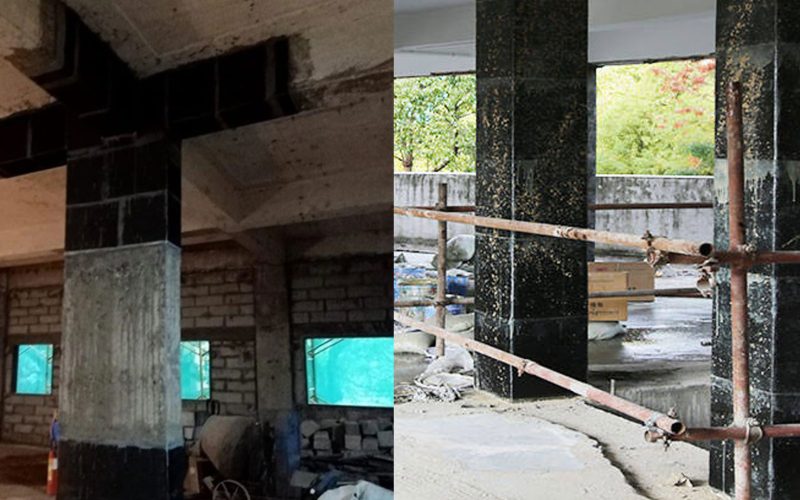Introduction
India’s building landscape is rapidly evolving, with old structures needing reinforcement and new ones demanding future-proof solutions. From heritage buildings to multi-storey residential towers, maintaining structural integrity is critical. As more people seek durable, cost-efficient methods to strengthen concrete elements, Carbon Wrapping is becoming the method of choice. It offers unparalleled reinforcement without demolition, making it ideal for the Indian audience focused on safety, budget, and sustainability.
Understanding the Need for Advanced Strengthening Techniques
Indian structures, especially those built before 2000, often lack seismic resistance and weather resilience. Due to urban overloading and poor maintenance, many RCC elements develop cracks and corrosion. Traditional repair techniques are either too invasive or provide only temporary relief. That’s why modern methods like Carbon Wrapping are now preferred. These systems reinforce load-bearing elements such as beams, slabs, and columns without changing the original layout or reducing usable space.
What is Carbon Wrapping and How Does It Work?
This advanced repair method involves wrapping fiber-reinforced polymer sheets around a structural component. These sheets are saturated with resin and bonded to the surface. Once cured, they form a high-strength composite layer. This layer acts as external reinforcement, improving tensile strength, ductility, and load distribution. As a result, Carbon Wrapping significantly boosts structural performance without adding bulk. It’s a lightweight solution with superior performance, ideally suited for aging structures in Indian metro and semi-urban areas.
Key Advantages for Indian Structures
In a country where building regulations and seismic risks vary widely, flexibility is essential. Carbon Wrapping adapts to different construction types and damage levels. It works on residential apartments, commercial offices, educational institutes, and public infrastructure. Additionally, Indian climates—from the humid coasts of Kerala to the arid regions of Rajasthan—don’t affect its performance. Because the material is corrosion-resistant and non-reactive, it offers long-lasting durability across various environmental conditions.
Applications Across Various RCC Components
This strengthening technique isn’t limited to a single structural element. Engineers use it to reinforce RCC beams, columns, slabs, and even walls. When used on columns, Carbon Wrapping increases axial load resistance. On slabs, it prevents cracking and deflection. On beams, it enhances bending and shear resistance. In India’s growing cities where buildings are constantly modified, these applications prevent structural failure, extend life, and support extra loading without major reconstruction or cost escalation.
When Should Property Owners Consider Carbon Wrapping?
There are clear signs that indicate the need for strengthening. These include surface cracks, water seepage, deflection, exposed reinforcement, and vibration under normal loads. If your structure is over 20 years old, or located in a seismic zone, inspection is essential. Also, when additional storeys or machinery are introduced, structural recalibration becomes necessary. Carbon Wrapping provides a reliable, non-invasive option to address such issues early before they escalate into dangerous failures.
Seismic Retrofitting and Earthquake Resistance
Earthquakes pose a real threat to many Indian regions. From Jammu to Gujarat, tremors have caused widespread damage. Older buildings especially need reinforcement to resist lateral seismic forces. Carbon Wrapping improves the ductility and energy absorption of RCC members. This means they can better withstand shaking and displacement during earthquakes. In contrast to steel jacketing, this method offers better strength-to-weight ratio and requires no welding or drilling, reducing both time and risk.
Carbon Wrapping vs. Conventional Strengthening
Traditional techniques like jacketing or steel plating add weight and occupy space. They are labour-intensive and often require heavy machinery. On the other hand, Carbon Wrapping adds negligible weight and takes very little time to install. It does not interfere with architectural elements or daily operations. For India’s residential societies, commercial malls, and industrial plants, this solution allows strengthening with minimal disruption, lower costs, and improved safety. It’s truly a leap forward in civil engineering.
Cost Efficiency for the Indian Market
Budget plays a critical role in decision-making for most Indian property owners. While the upfront cost of Carbon Wrapping may seem higher, its long-term benefits are undeniable. Reduced labour, shorter project timelines, and longer structural life make it a smart investment. Housing societies, builders, and government institutions benefit from fewer repairs and higher occupant safety. This makes it highly cost-effective over time, especially when compared to continuous maintenance or full rebuilds.
Sustainable Construction and Environmental Impact
India is now moving toward eco-conscious construction practices. With rising concerns over construction waste and carbon footprint, preserving existing structures becomes essential. Carbon Wrapping supports this vision. It minimizes material usage and avoids demolition. Also, since it eliminates the need for steel-heavy reinforcements, it contributes to a lower carbon footprint. By retrofitting instead of rebuilding, property owners reduce environmental damage while improving building longevity—a step in line with India’s green infrastructure goals.
Step-by-Step Process of Implementation
Application starts with a detailed structural audit by engineers. Damaged areas are identified, cleaned, and prepared for treatment. Surface defects are repaired before the wrap is installed. Then, resin is applied, and fiber sheets are carefully layered. After curing, the component is ready for use. This process requires trained personnel and adherence to building codes. When correctly applied, Carbon Wrapping delivers consistent performance for years without needing repeated intervention.
Popular Use Cases Across Indian Cities
Many Indian cities have already adopted this technique. Metro stations in Delhi, residential towers in Mumbai, and bridges in Hyderabad have used it for life extension. Even historical structures like temples and churches are benefiting from this non-destructive reinforcement. In flood-prone areas like Assam, Carbon Wrapping helps protect exposed RCC elements from prolonged water contact. Its use is growing not only in large metro zones but also in emerging tier-2 and tier-3 cities.
Finding the Right Service Provider in India
Not all contractors can deliver high-quality structural reinforcement. When selecting a provider for Carbon Wrapping, look for experience, certifications, and client testimonials. Check whether the team is trained in composite applications and follows IS standards. The right service provider will conduct structural analysis, offer material options, and ensure precision during application. For peace of mind, always insist on a warranty and post-installation inspection. Making the right choice ensures long-term safety and performance.
Debunking Myths About Carbon Wrapping
Many homeowners mistakenly believe this method is only for large or commercial structures. However, Carbon Wrapping is suitable for all building types. It’s also a misconception that it changes the appearance of the building. The wrap is thin, easily painted, and visually unobtrusive. In fact, it’s invisible to the untrained eye. Another myth is that it’s unaffordable. In reality, the cost is reasonable when compared to the savings and protection it offers in the long term.
Role in Extending Structural Lifespan
With the right application, Carbon Wrapping can extend a structure’s lifespan by 15 to 25 years or more. It stabilizes the concrete, halts progressive damage, and prevents catastrophic failures. For Indian families that rely on generational properties, this is a major advantage. Similarly, developers and commercial landlords can use it to preserve asset value and avoid frequent structural repairs. The durability and reliability of this method make it an investment, not an expense.
Government Push for Safer Infrastructure
The Indian government has been increasingly vocal about building safety and seismic resilience. With the introduction of updated building codes and awareness programs, there’s an active push toward retrofitting. Carbon Wrapping fits perfectly into these goals. It meets seismic standards, supports smart city initiatives, and aligns with disaster-preparedness protocols. As public infrastructure ages, this method will play a central role in keeping essential services—like hospitals, schools, and transport networks—safe and operational.
The Smart Solution for Modern India
In conclusion, Carbon Wrapping is a game-changer for Indian infrastructure. It delivers superior strength, longer life, and minimal disruption. For people searching for the best structural repair method, it checks every box—cost-efficiency, sustainability, and long-term performance. From residential buildings to large infrastructure projects, this method has proven its worth.












